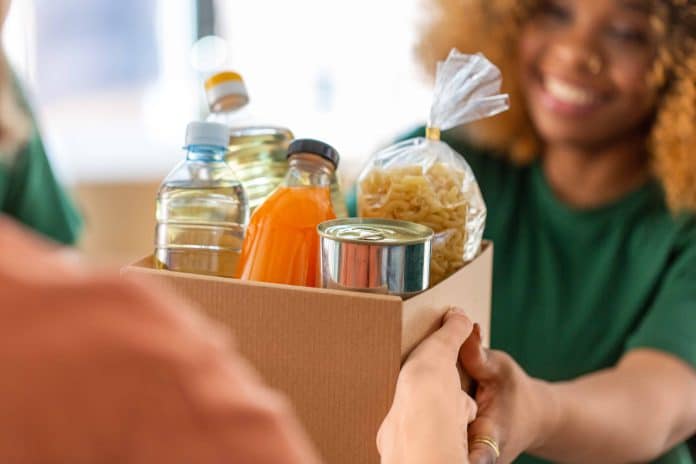
Some people don’t have enough money to buy groceries. Thanks to the federal government that concentrates its efforts to support and help Americans who suffer from this problem, different food support programs have been made to help. One great example of these programs is the Commodity Supplemental Food Program (CSFP). Not every American knows that this program exists or how helpful it can be!
Explaining the Commodity Supplemental Food Program (CSFP)
The goal of CSFP is to help people who are at least 60 years old and don’t have high incomes. CSFP supports these people with healthy food from the United States Department of Agriculture (USDA). For the program to run, the USDA gives food and funding to participating states which also include Indian Tribal Organizations. The program is also supervised at the federal level by the Food and Nutrition Service (FNS), an agency of the USDA. CSFP is available through the Agriculture and Consumer Protection Act of 1973.
Ways CSFP Helps
The food packages offered by CSFP may not cover the amount of food needed for a full diet, but you can still benefit from them if you qualify!
The food packages provide additional support to individuals who are eligible. A lot of people benefit from this program. The average number of people who benefit from this program is 676,000 individuals per month throughout the year.
The CSFP food packages include certain kinds of food like:
- Certain types of dairy milk
- Juice
- Grains
- Certain types of cereal
- Peanut butter
- Dry beans
- Poultry & canned meat
- Canned fruits & canned vegetables
Participating States of CSFP
The good news is that all 50 states are approved for CSFP, but you should also keep in mind that there are more places where the program is available. CSFP is available in the District of Columbia, Puerto Rico, and Indian Tribal Organizations (ITOs). However, CSFP is approved to be available only in the following ITOs:
- Shingle Springs Band of Miwok Indians (CA)
- Oglala Sioux (SD)
- Seminole Nation (OK)
- Spirit Lake Sioux Tribe (ND)
- Red Lake (MN)
Depending on particular service areas, states may have the right to make local residency requirements. However, states cannot require a minimum residency period. States may include in the requirements that applicants must struggle with nutrition. This could be proven with the help of a staff member of the local agency or a doctor.
Getting More Information about CSFP
For more information about the CSFP program or if you have any questions about applying and its process, it is advised to get in touch with your CSFP state agency.
Other Food Support Programs
There are other food support programs in addition to CSFP that support individuals with food issues. Examples of these programs are:
- Supplemental Nutrition Assistance Program (SNAP)
- Special Supplemental Nutrition Program for Women, Infants, and Children (WIC)
- Disaster Supplemental Nutrition Assistance Program (D-SNAP)
Supplemental Nutrition Assistance Program (SNAP)
SNAP is one of the most widely known food support programs in America. It provides support to individuals who don’t have enough money to buy their groceries. The way this program works is that it provides support through Electronic Benefit Transfer (EBT) cards. A certain amount of money is transferred monthly to this card, which can be used in certain shops that accept these cards as a payment option. The amount that is given to applicants can be determined by factors such as the amount of their income, the number of family members in the household, etc. To explain this more, from Oct. 1, 2023, to Sept. 30, 2024, the highest amount of payments of the SNAP program are:
- $291 for 1 individual within a household
- $535 for 2 individuals within a household
- $766 for 3 individuals within a household
- $973 for 4 individuals within a household
- $1,155 for 5 individuals within a household
- $1,386 for 6 individuals within a household
- $1,532 for 7 individuals within a household
- $1,751 for 8 individuals within a household
- $219 for each individual within a household of more than 8
An important note to remember is that the amounts mentioned above are only available for houses in 48 contiguous states in addition to the District of Columbia. However, different maximums are offered to families that live in Alaska, Hawaii, Guam, and the U.S. Virgin Islands. To apply for this program, you should reach out to your state SNAP office.
Special Supplemental Nutrition Program for Women, Infants, and Children (WIC)
WIC is similar to CSFP in the way that it targets certain groups of people to provide them with food assistance. WIC is a governmental program that helps eligible individuals with a qualifying income who happen to have a nutritional risk.
The program supports individuals who are:
- Newborns until they turn one year old, and children until they turn five
- Pregnant (covering the pregnancy and 6 weeks after the baby is born or the pregnancy ends)
- Breastfeeding a baby until they turn one year old
- Not breastfeeding and up to six months after the baby is born or the pregnancy ends
Applicants who qualify can get certain types of support such as getting supplemental healthy foods, getting nutrition education at WIC clinics, getting healthcare appointments and screenings, welfare and social services, and plenty more. The Food and Nutrition Service (FNS) is in charge of running this program at the federal level, but 89 WIC state agencies, with around 47,000 authorized retailers, administer it. To know more about this program, get in touch with your state agency to book a meeting.
Disaster Supplemental Nutrition Assistance Program (D-SNAP)
Another program to know more about is D-SNAP, which is a food support program that helps families who struggle with food due to a natural disaster. This program works only in states that first receive an Individual Assistance declaration from the president. Followed by that, the state must ask for approval from the FNS. They must get approval to operate the program!
When a state gets approval, an eligible applicant will receive an Electronic Benefit Transfer (EBT) card that will work similarly to how it works for SNAP. As mentioned before, a family or individual who suffers from the results of a natural disaster is eligible to receive this program. For example, disaster-related costs are:
- Business and home repairs
- Temporary shelter costs
- Evacuation and moving costs
- Personal injury costs
- Funeral costs
- Loss of income or decrease because of a disaster during a good length of the benefit period
To know more about the program, you should keep an eye out on your state agency for details. A state agency is the best place to find out more about the application process and ways to apply, eligibility criteria, and more.
To Summarize
There are different food support programs that help people that have food issues. One good example is the Commodity Supplemental Food Program (CSFP). This program aims to support elderly individuals with an eligible income with certain types of nutritious foods. On top of that, other food support programs exist like:
- Supplemental Nutrition Assistance Program (SNAP)
- Special Supplemental Nutrition Program for Women, Infants, and Children (WIC)
- Disaster Supplemental Nutrition Assistance Program (D-SNAP)
It may come to you as a surprise but food support is more accessible than you think!





















